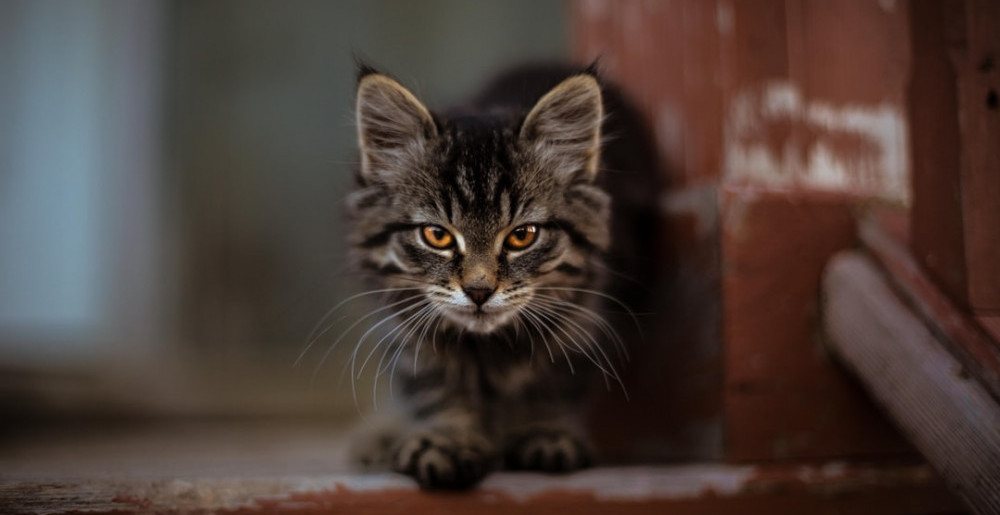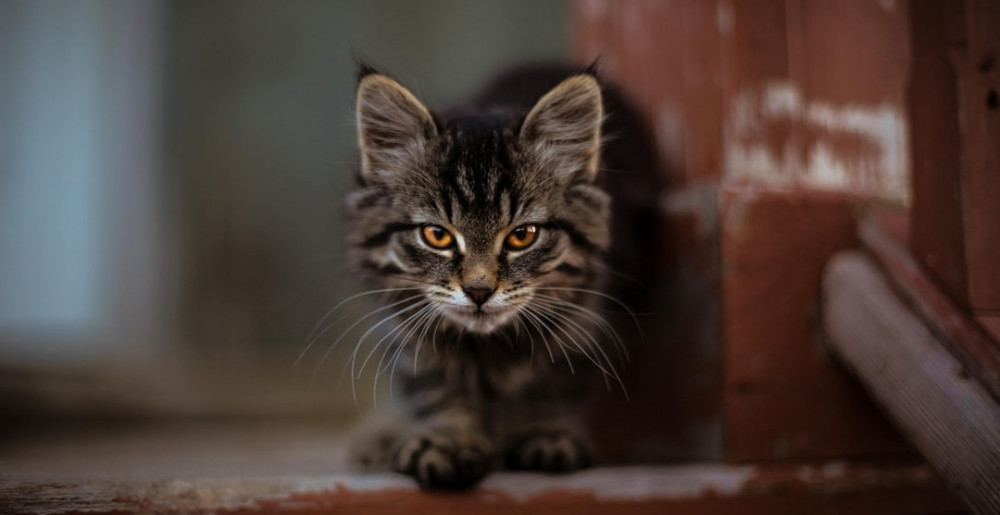
Hello Cat Enthusiasts!
An increasing number of owners choose to keep their cats indoors, so today we are going to answer the question “Should cats be kept indoors and if so, why?”
Should Cats Be Kept Indoors?
Yes, cats should be kept indoors mainly for their own safety.
Humane societies and wildlife organizations recommend cat owners to keep their cats indoors and give them supervised outdoor time due to the risks associated with uncontrolled outdoor access.
Outdoor cats are at a very high risk of injury, disease and death. They also negatively affect wildlife through hunting behaviours.
Live Outdoors Die Young, or Consequences of Uncontrolled Outdoor Access
It is believed that outdoor access has certain benefits for cats. It allows them to interact with natural environment and perform natural behaviors, such as exploring and hunting. But it also has serious consequences for cat health and local wildlife.
Free-roaming cats can be seriously injured or killed
Traffic. Many cats die on the roads or develop severe injuries. Research by Irene Rochlitz shows that young cats between 7 months and 2 years of age are at most risk of being involved in RTA (road traffic accident).
Rochlitz also found that such factors as season, time of day or night, hours spent outside or coat color did not affect the likelihood of a cat being in a RTA.
Geographical location also made no difference. Cats in small towns or villages are at the same risk as cats in big cities. There isn’t any ‘safe’ time or place to reduce the risk of collision.
Outdoor cats often get involved in numerous accidents besides RTA. A few of them are:
- foreign object ingestion
- drowning
- getting trapped or stuck in a tree, drain, car engine, wall, etc
- heat stroke
- eye or paw trauma
These situations often result in injury or death of a cat.
Wildlife, dog and cat aggression can inflict trauma and result in death. Cats are relatively small animals, so they can become prey for coyote, cougar, birds of prey (eagle, owl) and other predators. Cats can be hurt by animals who defend their territory (raccoons, skunks) or life (squirrels, rats, snakes).
Feral and stray dogs often attack cats to protect their food and territory.
Finally, cats fight with one another. Bites and scratches result in infection and serious diseases, such as abscesses.
Cats often get poisoned outdoors. Consumption of contaminated water and food, various toxic substances, and poisonous plants results in acute health concerns or death.
Outdoor cats contract diseases and parasites
There is a multitude of diseases and parasites that can be transmitted through contacts with street animals and wildlife. Many of them are zoonotic (i.e., can be transmitted from cats to people).
Viral infections are very dangerous because they cannot be cured. Vaccination helps to prepare the immune system but doesn’t completely protect against infection. Common viral diseases are:
- Feline leukemia virus (FeLV) and feline immunodeficiency virus (FIV) weaken the immune system and cause secondary diseases
- cat plague or feline panleukopenia virus (FPV) is a highly contagious and fatal disease, especially for young cats
- rabies affects nervous system. This virus spreads from animals to humans. It is 100% fatal
- feline calicivirus (FCV) and feline viral rhinotracheitis (FVR) cause upper respiratory infection
Cats can infect themselves with parasites through contact with environment or infected animals. Parasites cause serious diseases and weaken the immune system.
There are two types of parasites: internal, such as worms and protozoans and external, such as fleas, ticks and lice. External parasites are intermediate hosts of internal parasites, so cats are often infected with two types simultaneously. For example, fleas are carriers of tapeworms, so cats with fleas can likely become infected with tapeworms.
Outdoor companion cats can become stray cats
Free-roaming cats can get lost or run away and end up homeless. Cat overpopulation is a result of human irresponsibility and cruelty.
Stray and feral cats – also called community cats – are abandoned or lost companion cats and their offspring. They live short and horrible life in awful conditions.
Intact companion cats with free outdoor access make significant contribution to the problem because they reproduce and create even more unwanted cats.
Free-roaming cats have negative impacts on wildlife
Domestic cats are invasive species (i.e., non-native animals that cause harm) to any ecosystem. Their abundance and ability to efficiently hunt make them dangerous to native wildlife that hasn’t defense mechanisms against predators like cats. They prey on small mammals, birds, reptiles and insects. Cats can also compete with local predators for food sources.
Outdoor cats regularly hunt, even if not hungry, and kill (or play with) more animals than they eat. Together with free-roaming companion cats, community cats pose a threat to biodiversity, particularly in isolated areas (e.g., islands).
Isn’t that a little too much?
Obviously, modern environment, especially urban areas, is unsuitable for free-roaming cats. Or, it’s better to say, no more suitable.
Probably, long time ago all cats were allowed to roam. People kept cats because they were useful and nobody cared about such things as animal welfare, zoonotic diseases or biodiversity.
The outside world was friendly to cats, they didn’t face the risk of vehicle collisions or poisoning. Before the invention of rodenticides, cats had abundant natural food source.
Keeping cats indoors was very difficult (if even possible) because pet nutrition and cat litter were not available. So, people relied on cats to keep rodents at bay, cats freely performed their natural behaviours, everyone was happy.
But the world has changed. Outdoor cats are exposed to so many risks, they literally cannot survive. Average lifespan of an outdoor cat is only three years.
Modern streets are deadly for cats. Concrete and asphalt isn’t their natural environment. Millions of community cats struggle to survive every day. They live outside because people failed them: tamed them, played with them and then just threw them away. They aren’t healthy, and they definitely aren’t happy. And owned cats shouldn’t add to this disaster.
Human-cat relationships have changed as well. Most people keep cats as companions and don’t really need them to hunt anymore. Companion cats are family members, and owners want them to be healthy, happy and live as long as possible. Indoor lifestyle is a good way to keep cats secure from unnecessary danger and the only way to protect wildlife from cats.
Outdoor Activities Can Be Replaced Indoors
In an indoor environment cats can do everything they usually do outside. As cat parents, it is our task to create a comfortable cat friendly environment.
Cats have natural instincts to hunt, pounce, climb, hide and explore.
We can stimulate hunting behaviours with puzzle feeders and toys that mimic prey for cats, such as cat feather wands, toy mice or laser toys.
Cats enjoy hiding in dark places. Boxes or cat houses are good places to sleep and hide while cat tunnels and play mats encourage cats to hide and pounce.
Cats love scratching, climbing, exploring and prefer to be above level. We can increase vertical space using shelves or cat towers with multiple scratching surfaces and areas to explore and play.
In addition, we can take our cats for a walk on a leash or make enclosed areas outside, so they can enjoy fresh air in a safe way.
Finally,
owning a cat is a great responsibility. It is not a nature’s task to care for our cats or make them happy, but ours only. It is our responsibility to protect our cats from harm and keep them healthy.
My experience is that indoor cats are as happy as outdoor cats – or even happier – and live much longer and healthier life. I never let my cats roam freely but they are trained to walk on leash. They just ask me to take them outside if they feel like they need some fresh air and exercise.
It requires time and effort to keep cats indoors, true, but peace of mind is definitely worth it.
If you have something to add or wish to share your experience, please leave a comment.
Thank You For Reading!

